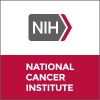
A Study of MAb-3F8 Plus Granulocyte-Macrophage Colony-Stimulating Factor (GM-CSF) Versus 13-cis-Retinoic...
Primary Refractory NeuroblastomaThis is a multicenter, randomized, controlled, open-label study. Patients meeting inclusion/exclusion criteria will be randomized (1:1) to receive two cycles of MAb-3F8 plus GM-CSF or RA plus GM-CSF. Patients who do not respond to their assigned treatment after two cycles may cross-over to receive the alternate treatment. Disease response and safety will be assessed in all patients after cycle 2 and after cycle 4.

Autologous Stem Cell Rescue With CD133+ Selected Cells in High-Risk Neuroblastoma
NeuroblastomaThe goal of this clinical research study is to learn how long it takes for certain types of transplanted stem cells to produce new blood cells. The safety of this treatment will also be studied. Finally, researchers want to learn if collecting the cells with the CliniMACS device can decrease the possibility of tumor cells contaminating (appearing in) the stem cells that are reinfused into participants.

HGS-ETR2 to Treat Children With Solid Tumors
Ewing's SarcomaOsteosarcoma2 moreBackground HGS-ETR2 is a monoclonal antibody, produced in the laboratory from human genes. HGS-ETR2 targets a protein called the TRAIL receptor that is located on the surface of some tumor cells. When the TRAIL receptor is activated, it can cause the tumor cell to self-destruct. Objectives: To determine the highest dose of HGS-ETR2 that can be given safely in children and young adults with cancer. To study the pharmacology (how the body handles the drug) of HGS-ETR2 by measuring the amount of drug in the bloodstream over time before and after a dose is given to the patient. To determine if HGS-ETR2 can stop or slow tumor growth. To determine whether proteins in tumor tissue before treatment can predict whether the tumor will respond to HGS-ETR2 therapy. Eligibility: -Patients 1 to 21 years of age with solid cancers that do not respond to standard therapy. Design: HGS-ETR2 is given through a vein (intravenously, IV) once every 14 days. Each treatment cycle is 28 days long and consists of two doses of HGS-ETR2. The dose of HGS-ETR2 is increased in successive small groups of patients until the maximum tolerated dose (highest dose with acceptable side effects) is determined. During the treatment period, patients have a physical examination at least once a week, and routine blood tests at least twice a week. These tests are done less frequently in later treatment cycles. Additional blood samples are drawn for immunology and pharmacology studies. Tests to monitor the size of the tumor (X-rays, CT scans, MRI, PET scans) are done periodically throughout the treatment period. Patients may continue to receive HGS-ETR2 until unacceptable side effects develop or the tumor grows.

A Study of Bempegaldesleukin (BEMPEG: NKTR-214) in Combination With Nivolumab in Children, Adolescents...
EpendymomaEwing Sarcoma9 moreThe purpose of this study is to first, in Part A, assess the safety, tolerability and drug levels of Bempegaldesleukin (BEMPEG) in combination with nivolumab and then, in Part B, to estimate the preliminary efficacy in children, adolescents and young adults with recurrent or treatment-resistant cancer.

Trial of Tolcapone With Oxaliplatin for Neuroblastoma
NeuroblastomaThe purpose of this research study is to evaluate an investigational drug (Tolcapone) alone and in combination with oxaliplatin, for relapsed and refractory neuroblastoma. Tolcapone is approved by the U.S. Food and Drug Administration (FDA) for adults, but is an investigational drug in this study because it has not been approved in pediatrics for this indication. Oxaliplatin, although a drug approved by the FDA for other cancers, is investigational for treatment of neuroblastoma in this study. This study will look at the safety and tolerability of tolcapone in combination with oxaliplatin as well as the tumors response to this study drug.

NB2013-HR German (GPOH) / Dutch (DCOG) Trial
NeuroblastomaAlthough the five year survival rate of children with high risk neuroblastoma have increased over the last three decades from 4 to 44 % (1), neuroblastoma is the second most frequent cause for cancer related death in childhood (11 %). Most patients show good initial response rates (complete (CR) and partial remission (PR) rate 95 %), but 55 % experience a largely treatment-resistant tumor progression. Recently, a breakthrough with immunotherapy was reported by US investigators from the Children's Oncology Group (2) using the anti-ganglioside D2 (GD2) monoclonal antibody ch14.18 for tumor cell destruction and granulocyte macrophage-colony stimulating factor (GM-CSF) plus interleukin 2 (IL-2) for immunostimulation. This immune therapy resulted in an increase of 20 % Event free survival (EFS) at 2 year from randomization. However, this was associated with a high toxicity rate (pain, capillary leak syndrome). The proposed trial compares the Childrens' Oncology Group (COG) "standard of care" arm (anti-GD2 + GM-CSF + IL-2 i.v. + retinoic acid oral) with an experimental arm (anti-GD2 + GM-CSF + IL-2 s.c. + retinoic acid oral) designed to reduce toxicity. The potential benefit from this trial consists of the confirmation that the American trial design is feasible in an independent set of patients with different preceding therapy, at a different time point regarding to immune reconstitution after autologous stem cell transplantation (ASCT), the feasibility of a newly designed immunotherapy (which is hopefully less toxic) and the investigation of immune response parameters. This pilot study is the prerequisite for a consecutive randomized clinical trial comparing two immunotherapeutic approaches in a larger set of patients.

Evaluation of 2 Intensification Treatment Strategies for Neuroblastoma Patients With a Poor Response...
Very High Risk NeuroblastomaThe main objective is to evaluate the efficacy of two intensified consolidation strategies in very-high risk neuroblastoma (VHR-NBL) patients in terms of event-free survival from randomisation date. This evaluation will follow a hierarchical testing procedure: each experimental treatment will be first evaluated as a single-arm phase 2 study, and in case of positive conclusion, the relative efficacy of both arms will then be evaluated comparatively.

Randomized Efficacy Study of TPI 287 to Treat Primary Refractory or Early Relapsed Neuroblastoma...
NeuroblastomaThe purpose of this research study is to evaluate a new investigational drug (TPI 287) for early relapsed neuroblastoma. An investigational drug is one that has not yet been approved by the Food and Drug Administration. This investigational drug is called TPI 287. This study will look at the tumor's response to the study drug, TPI 287, in combination with Irinotecan and Temozolomide versus the combination of Irinotecan and Temozolomide alone. This study will also evaluate the safety and tolerability of the study drug, TPI 287.

ODSH + ICE Chemotherapy in Pediatric Solid Tumors
Recurrent Solid TumorRefractory Solid Tumor3 moreThis study will be with pediatric patients who have refractory/recurrent solid tumors. They will receive standard chemotherapy (ICE) and we are investigating if the addition of a new drug, ODSH, will help to increase the time of their platelet recovery after ICE chemotherapy.The purpose of this study is to evaluate the safety and tolerability of ODSH in pediatric patients receiving "ICE" chemotherapy.

Fenretinide Lym-X-Sorb + Ketoconazole + Vincristine for Recurrent or Resistant Neuroblastoma
Recurrent NeuroblastomaNeuroblastomaCurrently there is no known effective treatment for recurrent or resistant neuroblastoma. Fenretinide is an anticancer agent that may work differently than standard chemotherapy. It may cause the buildup of wax-like substances in cancer cells called ceramides. In laboratory studies, it was found that if too much ceramide builds up in the neuroblastoma cells, they die. Fenretinide has been given by mouth as a capsule to many people, including children. When Fenretinide is given in capsules, very little of the drug is absorbed through the intestines into the body. This means patients have to take many capsules of fenretinide by mouth several times a day. In this study, a new oral preparation of fenretinide (called 4-HPR/LXS oral powder) is being tested to see if more fenretinide can be absorbed into the body. 4-HPR/LXS oral powder has been tested previously in a limited number of both children and adult cancer patients. Ketoconazole, commonly used to treat fungus infections, can increase fenretinide levels in the body by interfering with the body's ability to break down fenretinide. Ketoconazole will be given at the same time as the fenretinide powder. There is preclinical data that shows that combining fenretinide and vincristine prolonged survival in animal models, therefore, it is hoped that giving the vincristine with fenretinide will work better against the neuroblastoma that either drug given alone. About 70 children with neuroblastoma have been treated with various versions of the fenretinide powder to date, including about a dozen children that also took the fenretinide powder with ketoconazole, and no toxicities have occurred that limited the dosage and no serious or unexpected side effects occurred. However, vincristine has never been given with fenretinide or fenretinide plus ketoconazole before. Vincristine has been been given before with ketoconazole to both children and adults with neuroblastomas and other cancers.
